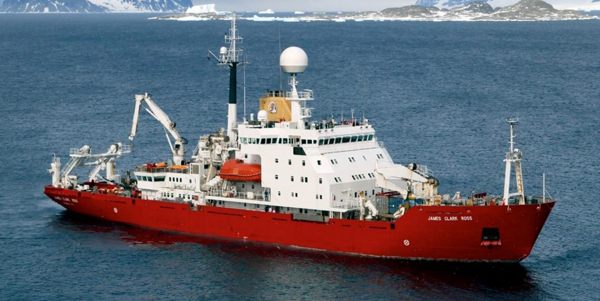RRS James Clark Ross helps Tristan's Blue Belt plans
Report published by Cefas
(Centre for Environment Fisheries and Aquaculture Science)
on 15th March 2018
Blue Belt update: James Clark Ross
The James Clark Ross left the Falkland Islands today and is steaming toward Tristan da Cunha, with expected arrival on the 22nd March. The vessel will survey seamounts at Tristan da Cunha and St Helena over a total of 16 days (8 days in each territory).
The survey plans are relevant to fisheries and marine biodiversity in each territory. The Tristan da Cunha leg of the survey will focus upon the biodiversity and habitats associated with the seamounts in the centre of the EEZ between Gough and the northern islands (the main fishing area). The St Helena leg will focus upon improving the understanding of pelagic food webs that underpin tuna fisheries around St Helena.

Photo from the British Antatctic Survey of the RRS James Clark Ross
The latest scientific equipment will record high quality bathymetry data (sea floor depth and structure). Deep sea cameras will take images of seamount habitats and fishery impacts, and scientific trawls will take samples of species that inhabit Tristan waters. Oceanographic features such as currents, temperatures and salinity will help define ocean conditions.
All these factors provide essential insights that will help inform how Tristan can best protect their resources. The vessel will pick up representatives from the Fisheries and Conservation Departments to take part in the sampling and processing during the trip.
Finally, BAS have UK-ODA funds to undertake 3 days of science at Tristan and the Blue Belt Programme have supplemented this with an additional 5 days. The Blue Belt team will work collaboratively with BAS scientists to deliver high quality science to help Tristan manage their EEZ.

